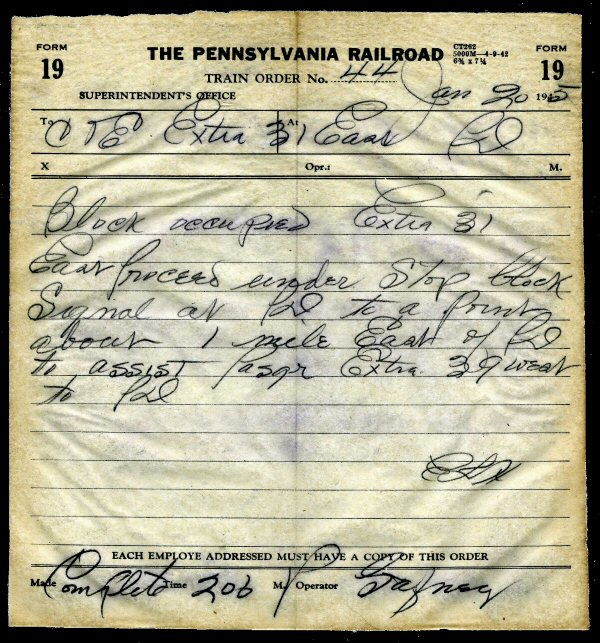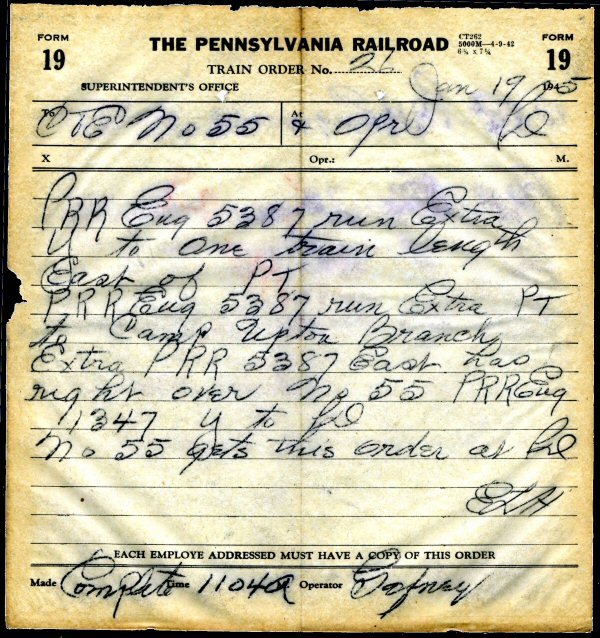Amtrak7 wrote:How often are "A" cards used today? I know that in order to operate in manual block territory, a train needs a K-card, but does every one need an A card too?
A train does not need a K Card to operate in manual block territory. The primary function of the K-card is to pass one or more block limit signals as though a clear block signal were displayed. So if we take a train such as 252 that operates between Ronkonkoma and Yaphank, the train does not pass any block limit signals. It does not receive a K-card. K-cards would only be issued in single track territory with rule 251 in effect. As of now, that is between Speonk-Montauk and Ronkonkoma-Greenport. There is scheduled track work for SK to MY Signalization Cutover November 11th and 12th, 2017. It would appear that is going to be 261 territory. I don't see any signal related track work for 2017 listed for Ronkonkoma-Greenport stretch.
As far as A-cards. The primary function is to represent superior opposing regular trains due in the past 12 hours. This is basically telling you that any scheduled train heading in the opposite direction that are superior in the last 12 hours has arrived. For example, all westbound trains in Montauk and Greenport will receieve an A-card to indicate that all scheduled eastbound trains in the past 12 hours have arrived. Generally, eastbound trains are superior and would not receive an A-card. There are situations where an Eastbound train would receive an A-card, such as an eastbound extra train would be inferior to a westbound regular train. Or if a note in the timetable or general notice specified a westbound is superior to an eastbound.
A train operating in single track with rule 251 would need to satisfy four things:
1) Condition of the manual block - The train needs a clear block. This could be via a K-card, Fixed signal, Train order, Verbally from Block operator, or a block operator displays a green flag/green light (under certain situations).
2) Representation - Represent superior opposing regular trains due in the past 12 hours. Generally done via A-card, but there are situations where you would represent using other methods.
3) Authority - Your authority is your schedule, or a train order if you are an extra.
4) Permission - Verbal permission from the block operator is needed to enter the main track.

